This post may contain affiliate links and I may earn compensation when you purchase through these links at no additional cost to you. Thank you for the support!
Do you want to find a yoga pose that can provide stress relief, decrease anxiety, reduce mild depression, relieve headaches, and give an energy boost? Try Viparita Karani, or Legs Up the Wall Pose! This pose is one of the best yoga poses to relieve stress. It certainly has become a favorite of mine and I hope it can become a favorite for you too.
I have often included this pose in yoga classes that I have taught, but it never gets the amount of attention it deserves. In an hour-long class, we stay in the pose for a minute or 2 and then move on.
When I practice this pose at home, 5-10 minutes in the pose is more of the standard and frequently longer! Viparita Karani is one of my go-to yoga poses to relieve stress!
This pose is what comes to mind when I think of “self-love,” or “self-care.” This pose shows us that the receptive part of our practice is just as important (perhaps more) than the active aspect of our yoga practice.
The message that is inherent in Viparita Karani is one that we know deep down, but don’t always give the proper attention. That is… we need rest and self-care. We need to be able to tell ourselves, “Today I’m going to take it easy and relax.” Not just once in a blue moon, but on a regular basis! You can at least give yourself this self-nurturing gift for 10 minutes once a week!
One beautiful thing about this pose, there is no warm-up required. You can practice Viparita Karani on its own! So it really does not take much time at all and the benefits are impressive.
This pose is good for almost anything that ails you. Read on…
Therapeutic Applications
- Anxiety
- Arthritis
- Digestive problems
- Headaches and migraines
- Mild Depression
- Respiratory ailments
- Urinary disorders
- Varicose veins
- Menstrual cramps
- Premenstrual Syndrome
- Menopause
Health Benefits
- relief for tired legs or cramps in the feet or legs
- stretches the back of the legs, front of the torso and back of the neck
- relieves a mild backache
- calms the mind
- boosts energy
- boosts immune system
I recommend that you practice this pose for at least 5 minutes, working up to 15-20 minutes.
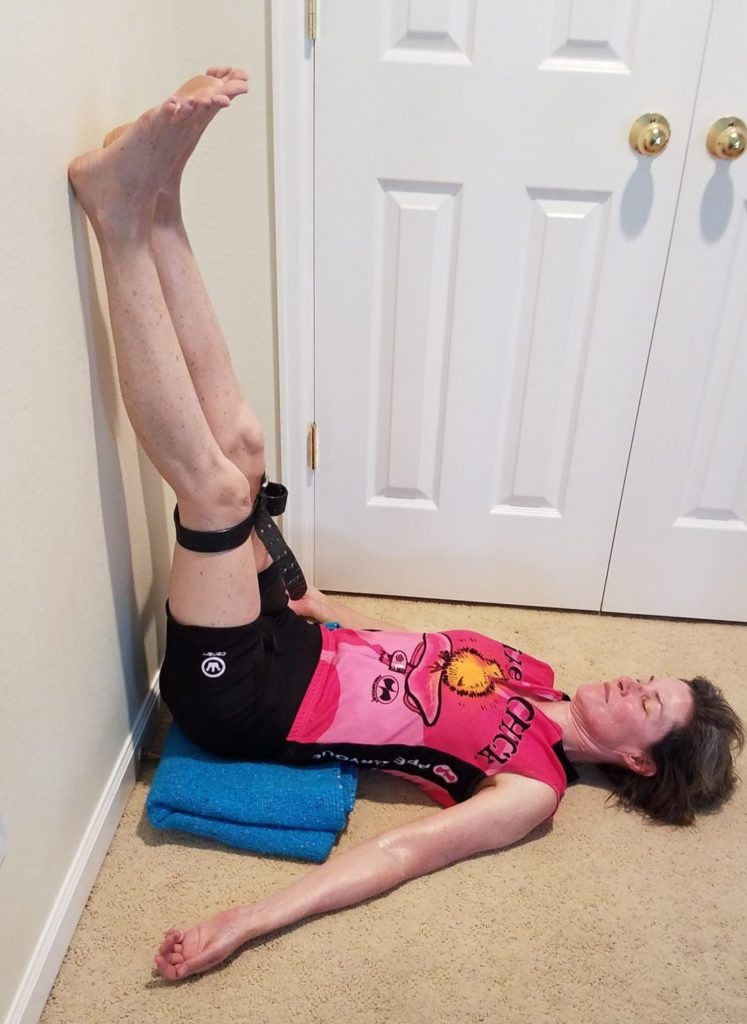
The Nitty Gritty – How to Do Legs Up the Wall Pose
-
- Collect props – 2-3 yoga blankets or a bolster, yoga strap, eye pillow (optional), yoga mat (optional)
- Set up your mat with the short end against the wall. Fold your blanket to make a yoga bolster. The more flexible you are, the higher your prop can be. You can fold up two blankets and stack them, or use a yoga bolster. For less flexible individuals, use a lower prop – one blanket, folded in half lengthwise, then folded into a square, then folded again (into a rectangle). If you are more flexible in the back of the legs, the blanket can be placed closer to the wall (0-6 inches from the wall), if you are less flexible, place your blanket bolster further from the wall (~12 inches away.) These are estimates, you can adjust as needed. If you are more flexible you may want to use two folded blankets, stacked on top of each other, or use a yoga bolster.
- Sit with the side of your body against the wall, just off of the yoga mat. Take a strap made into a loop, around the shins or the thighs just above the knees, and cinch it up slightly so there are still a few inches between the knees.
- Bring your back and head down onto the mat as you swing your legs up the wall. Slide the feet across the wall lifting the hips and place the hips onto the blanket stack or bolster. Adjust your distance from the wall, so that you can rest easily with the legs up the wall. The strap is used so that you don’t have to “hold” the legs there, but can rest.
- Place an eye pillow over the eyes if desired. Place the arms on the floor away from the body with the palms up.
- Use a calming breathing practice to help you release into the pose. Inhale to the count of 3 or 4, exhale to the count of 5 or 6. Lengthening the exhale breath is relaxing to the body. Do this for as many breaths as you like.
- Then just settle into rest. The “work” in the pose is to let go and surrender. Take at least 5 minutes in the pose, work up to 15-20 minutes.
Contraindications
Do not practice this pose if you are currently experiencing the following conditions:
- Glaucoma
- Uncontrolled hypertension (high blood pressure)
- Hernia
Tips
This is an excellent pose to relieve tired legs and feet. For example: after a long day on your feet, following a bike ride/hike or long playtime on your feet at the park with the kids.
A folded blanket under the head can add to your comfort.
You may like to have a blanket across the abdomen.
YouTube Video
Watch my YouTube Video for a visual demonstration and verbal explanation of this pose.
Add this pose to your self-care list. It’s easy to incorporate into your list of yoga poses for stress relief. Be open to what happens when you let yourself rest in this mild inversion pose. Try it and share your comments below!
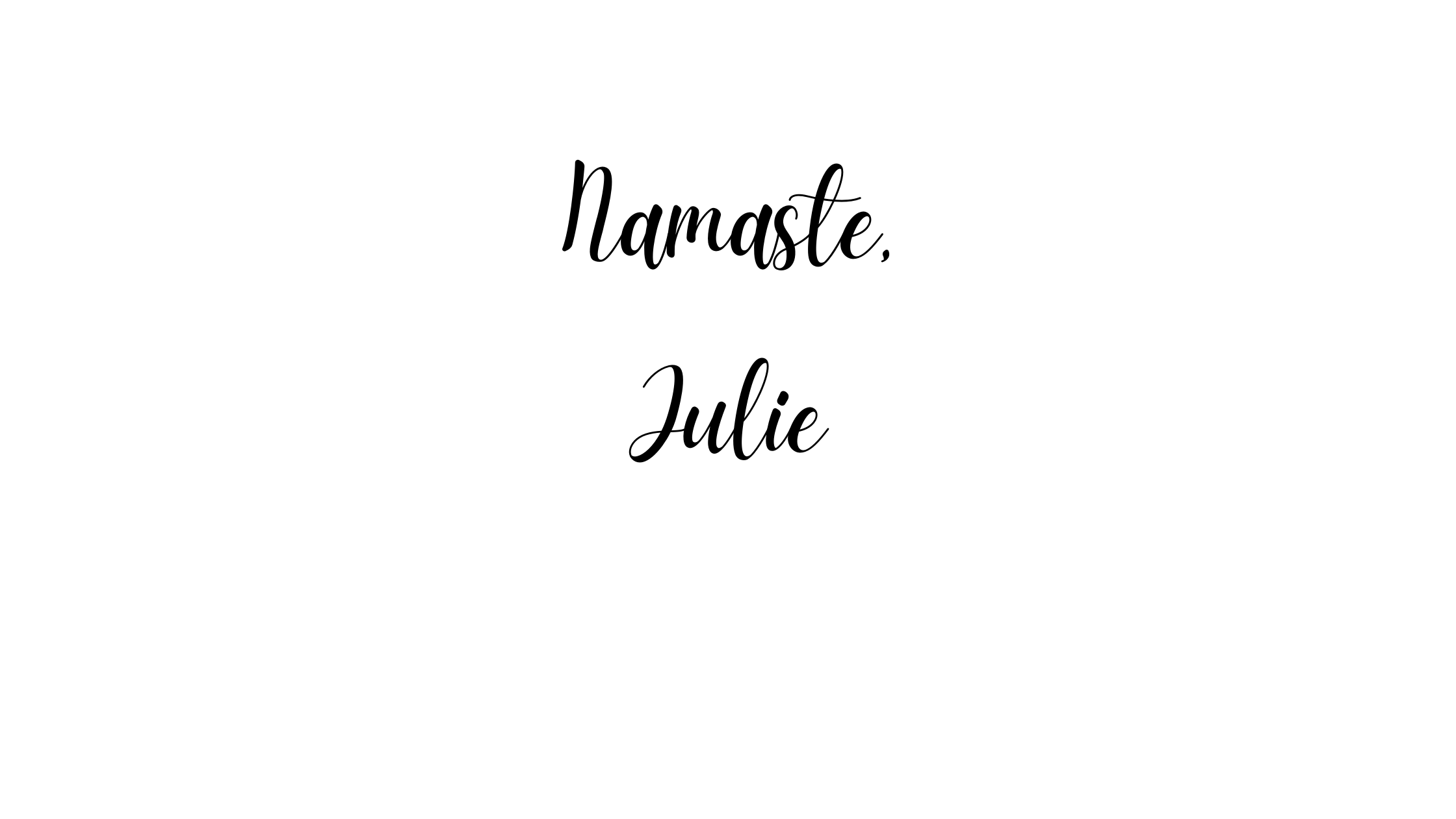
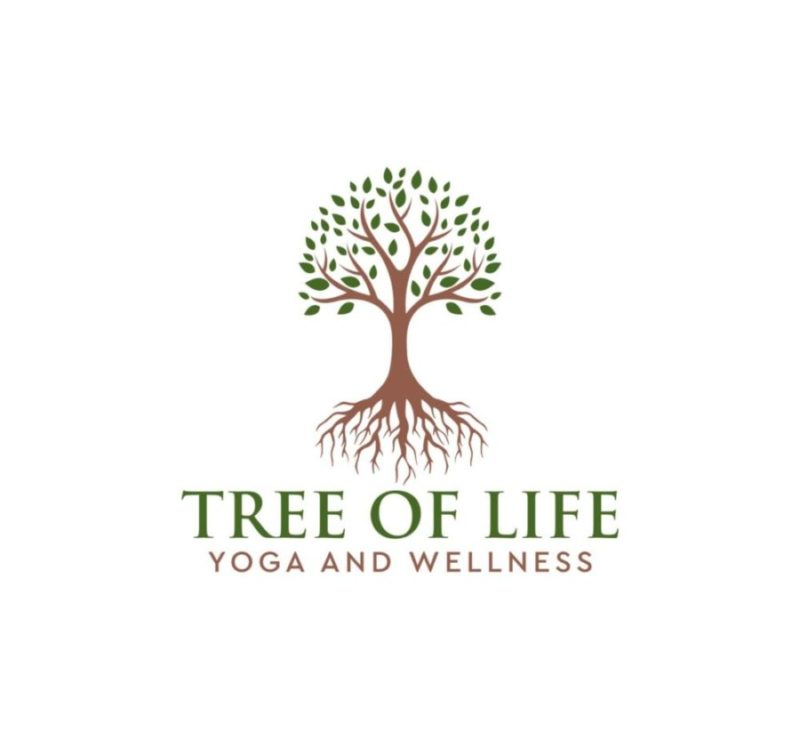


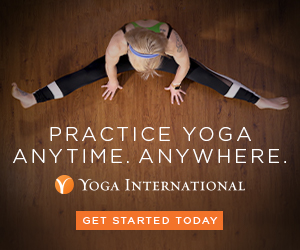


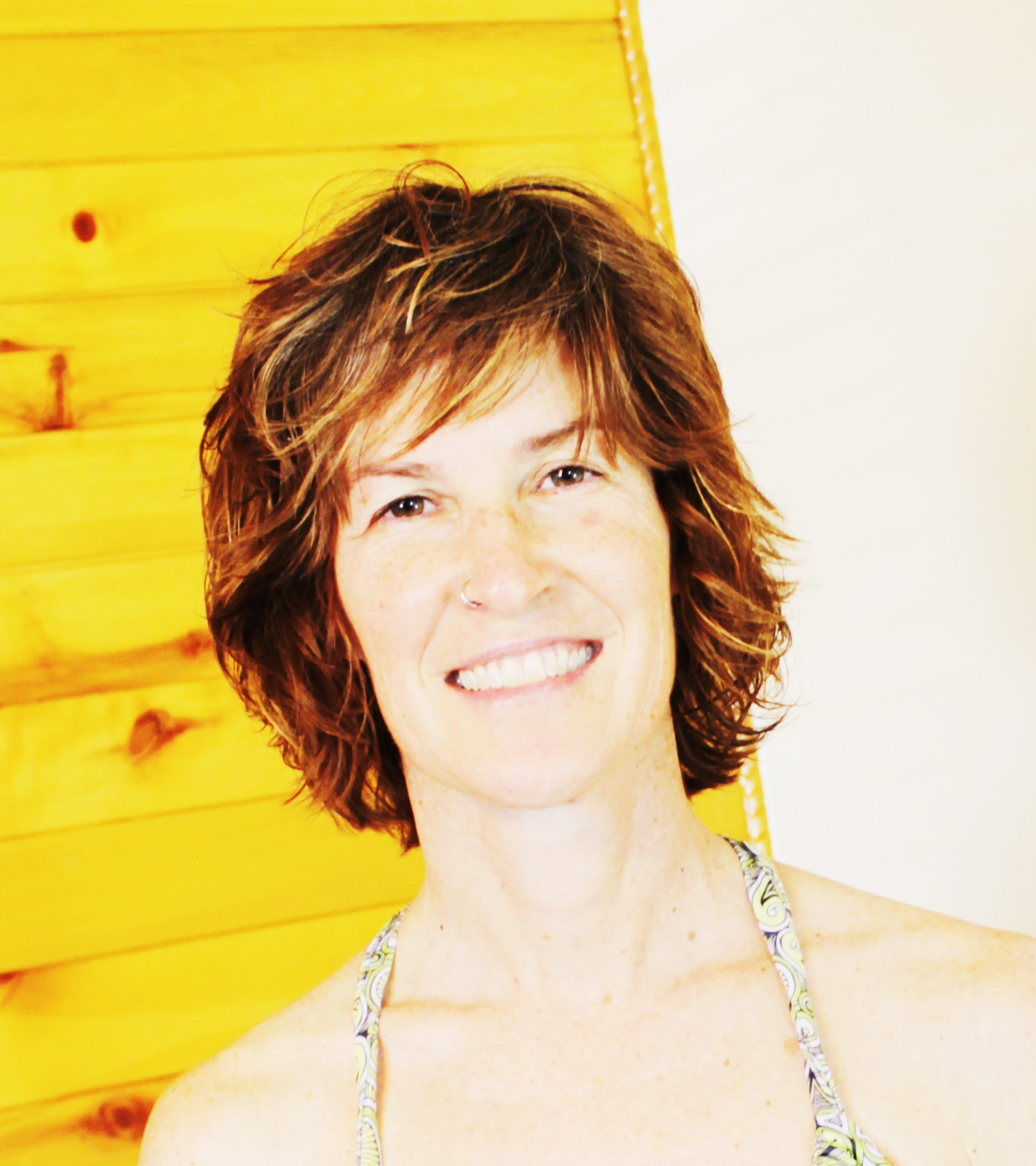
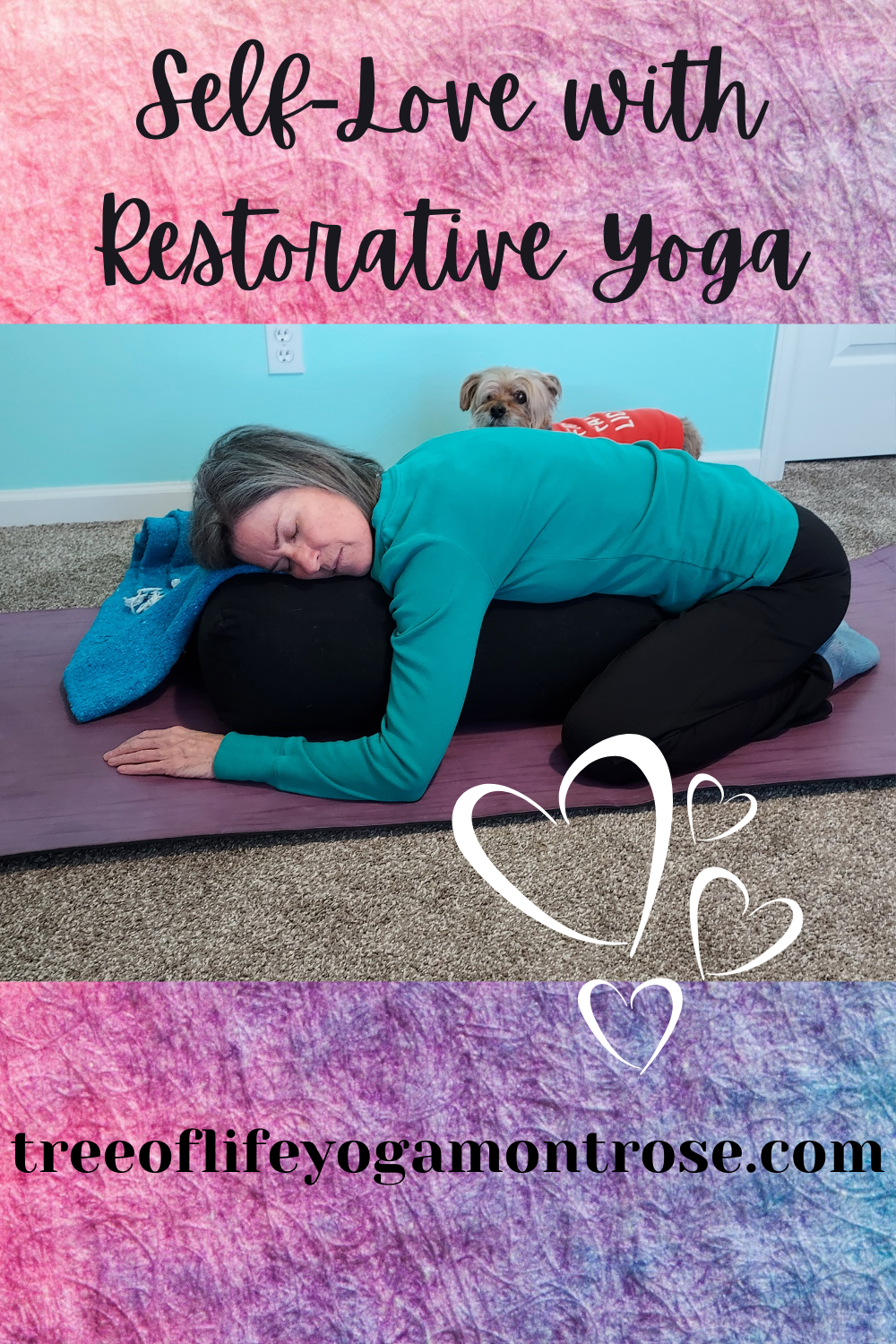


Audrey
January 8, 2021 2:46 pmThis pose has helped me so much! It is great to do before bed.
Julie
January 11, 2021 5:07 pmI am so glad to hear this Audrey! 🙂
Jen @ Jen Bradley | MOMS
May 15, 2020 7:50 pmI’ve just been studying about evening routines and this was one of the poses mentioned for helping to relax at the end of a long day! I”m going to try!
Julie
May 28, 2020 12:12 pmIt is a fabulous pose! It has made a significant difference in the way my legs/feet feel after a bike ride, hike or day on my feet! Enjoy!
angie
May 15, 2020 10:27 amfollowing foot surgery one of the therapist had me follow the instructions to this exercise it is great to relax legs as well as ensure no blood clots are present
Julie
May 15, 2020 10:58 amYes! Such an awesome pose. I’m going to do it this afternoon 😊
Anitra
May 14, 2020 5:16 pmThis is one of my favorite poses! Once in a yoga class, the instructor had us place a tennis ball under our shoulders during legs up the wall…it was super intense!
Julie
May 15, 2020 10:54 amI love Legs Up the Wall pose. I don’t think I’d like a tennis ball under my shoulders though!!
Amber Anderson
May 14, 2020 12:22 pmThank you! Im going to give this a try and see if it can give me relief for my legs and feet at the end of the day!
Julie
May 15, 2020 10:55 amI think you will find that it does, enjoy!! 😊
Ashley Greenwood
May 14, 2020 11:52 amI love doing this pose! I miss my yoga class where we would do this for a really long time. I do this at home multiple times a week and it is cool learning all the health benefits! Thanks for sharing 🙂
Julie
May 15, 2020 10:56 amThat’s great to hear! It is a fabulous pose 😊
Audrey at Two Pink Peonies
May 14, 2020 11:39 amI really enjoy reading all of your yoga tips, you are so knowledgeable! I’m going to try this pose tonight.
Julie
May 15, 2020 10:57 amThank you Audrey! Enjoy Legs Up the Wall pose!
Ali Duke
June 14, 2019 11:49 amThis would be good for me after a long day at work on my feet
Julie
June 15, 2019 8:10 amHi Ali,
Indeed it would! I will be doing this pose this afternoon after my daughter and I finish a hike. It is a wonderful pose. Give it a try! Thanks for visiting and commenting!
Sofia
February 15, 2019 7:41 amWow, I definitely see my self doing this on a Saturday morning when you need to de-stress from the all week craziness! The video is great! Showed clearly what to do and I think complements perfectly the post! Keep up the good job 😉 Namaste!
Julie
February 15, 2019 4:29 pmThanks Sofia for your encouraging words! This is such a wonderful pose! Very relaxing and therapeutic for many symptoms. Thank you for visiting my blog 🙂
Jaden
February 14, 2019 9:32 pmThis is a great post and I love the video you made! I’m excited to try this pose out!
Julie
February 15, 2019 4:31 pmThank you Jaden! This was the first video I ever made. This is a fabulous pose and is helpful for a variety of conditions. Enjoy! Thanks for visiting! 🙂
Anna
February 14, 2019 6:42 pmYES!!! I can do it all day, every day. My most favorite pose! Thank you for sharing
Julie
February 15, 2019 4:33 pmHi Anna!
It definitely is one of my favorites. Glad to connect with another yogini! 🙂
Nancy
December 29, 2018 1:34 pmI just read your post on 6 yoga poses for strong legs. Saw this and had to read. I can’t wait to work this into my everyday routine. This I can do!! Work on my feet 9 hours a day a Food Service Manager, my legs and feet are exhausted when I get home. I can definitely practice this kind of “self-love and self-care”. Thanks so much for sharing this.
Julie
December 29, 2018 3:17 pmHi Nancy,
This is the first pose that comes to mind when I read that you spend 9 hours a day on your feet!! I love to do this post after a long bike ride or hike, or otherwise on my feet for a long time. Works wonders! Definitely one of my favorites, excellent for self-care!
Thanks for reading and subscribing! 🙂
Lena
October 24, 2018 5:35 pmGreat post! I’ve never done yoga but since I’ve been cleared to start some postpartum exercises I think I’ll add some simple yoga into my routine and this one sounds amazing! So beneficial! Thanks for sharing!
Lena // http://www.ourchaoticmess.com
Julie
October 24, 2018 7:47 pmThis would be a good one to start with! I love this pose. I do have some posts detailing a few other foundational poses that would be good to do. Thanks for visiting my blog!